No discussion of Korean beauty would be complete without the mention of Jung Saemmool, a pioneering leader and first generation Korean makeup artist. In fact, Jung has left her mark on everything that K-beauty stands for today, including makeup that brings out people’s natural beauty, high-quality products based on intriguing concepts and sharp branding and space design. While 33 years have passed since Jung’s debut, her passion remains unquenched, and her curiosity unexhausted. Those traits still drive her pursuit of a dream shaped by her unique style, knowledge and philosophy, a dream that many still find inspirational to this day.
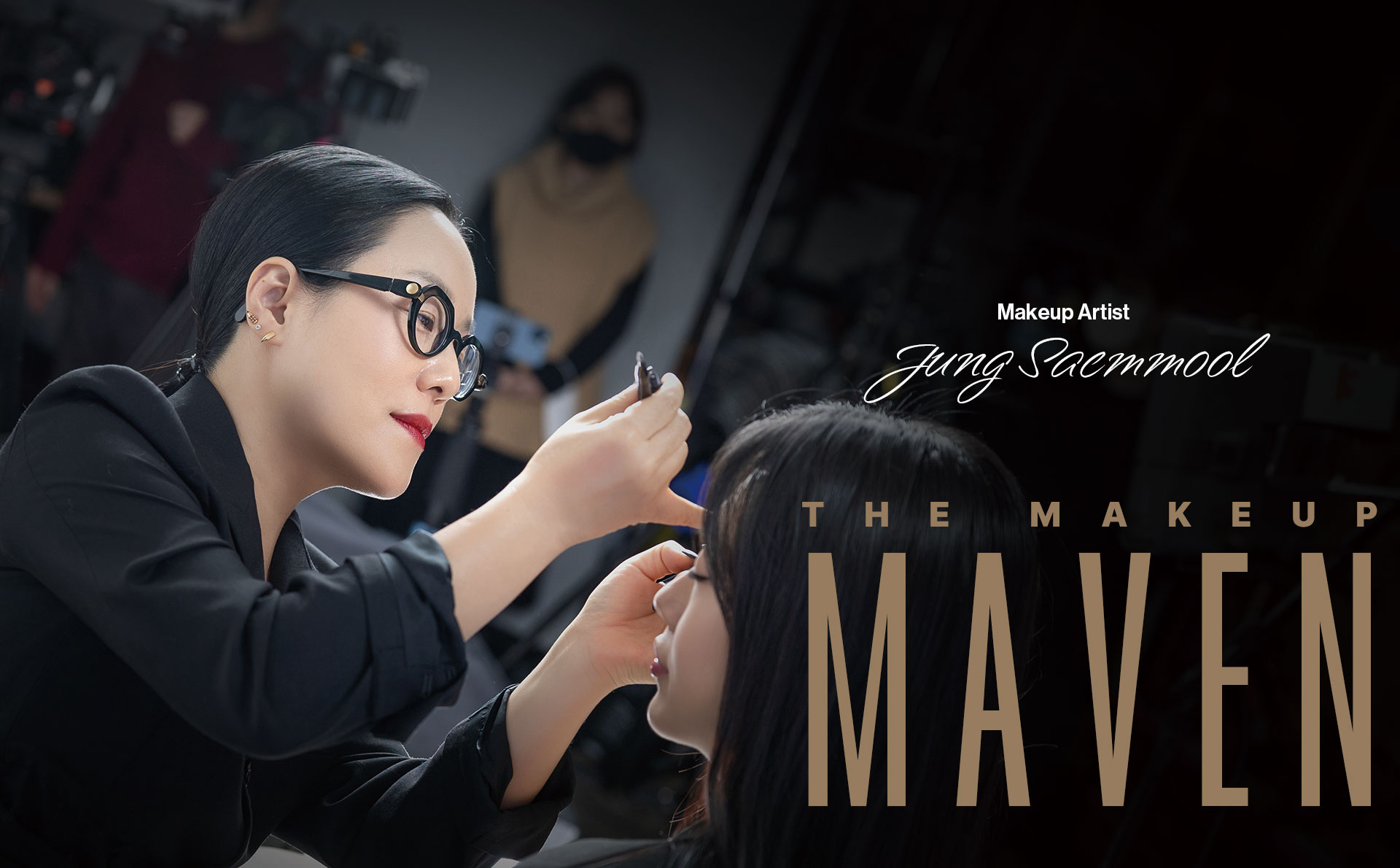
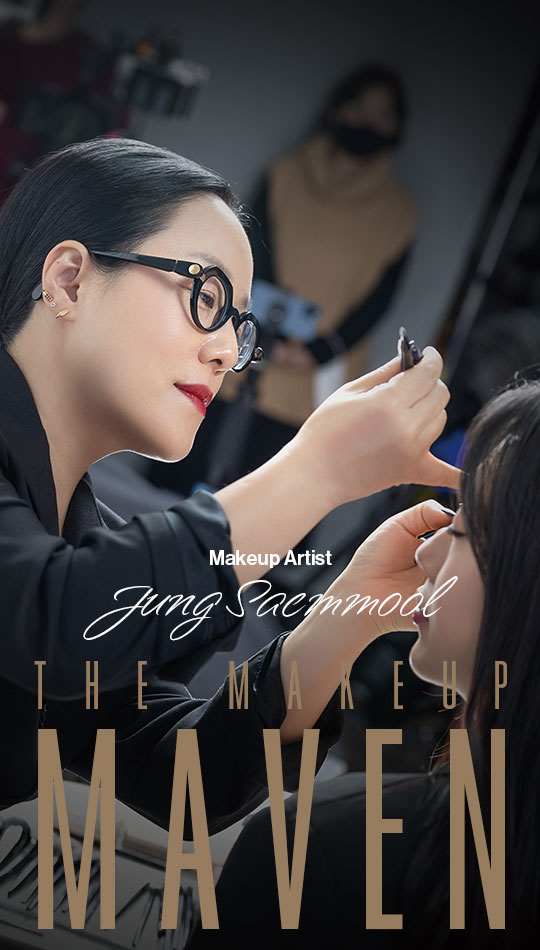
Writer.
Sung Ji Yeon
Photos courtesy of.
Jung Saemmool
Journey to the Top
Jung had always imagined she would spend her life drawing something. As a child, her dream was to become a painter, influenced by her mother’s study of Western-style art. But when her father’s business folded, she had to set aside her art studies and scramble to support the family. Then one day, she had a miraculous encounter with makeup. Despite their different canvases, makeup and art had striking similarities: they both used a brush and different shades of color, for example. Given her fondness for observing people and describing their beauty, Jung chose to become a makeup artist.
Makeup is a cutthroat industry where people who can’t prove their talent tend to be kicked to the curb. To make the grade, Jung worked endlessly, seeking to stand out from the crowd. “I kept a scrapbook where I recorded everything I knew about my clients’ styles and took note of helpful improvements. That gave my clients visual proof that I knew their shortcomings and could compensate for them. On the film set, I sought ways to make myself useful. I always checked whether my makeup clients were comfortable and had everything they needed to ensure they shone in their roles. I was happy to serve as their manager, stylist and even therapist if I thought it would help.”
Jung’s analytical skill and remarkable attention to detail soon attracted a long list of clients. She even worked with some of Korea’s best-known actors, such as Lee Seung-yeon, Ko So-young, Kim Hee-sun, Song Hye-kyo, Lee Hyori and Jun Ji-hyun. Her transparent makeup―the “no-makeup makeup” approach to making your face look prettier―also became highly popular with the public.
Despite her successes, Jung has kept pushing onward instead of resting on her laurels. She moved into the field of education with the establishment of the Jungsaemmool Art & Academy, hoping to support more people in their pursuit of ideal beauty. And while her business was going strong, she set everything aside to spend four and a half years studying fine art at the Academy of Art University in San Francisco. What she learned there became the foundation of her own theory of makeup and indeed of K-beauty itself.
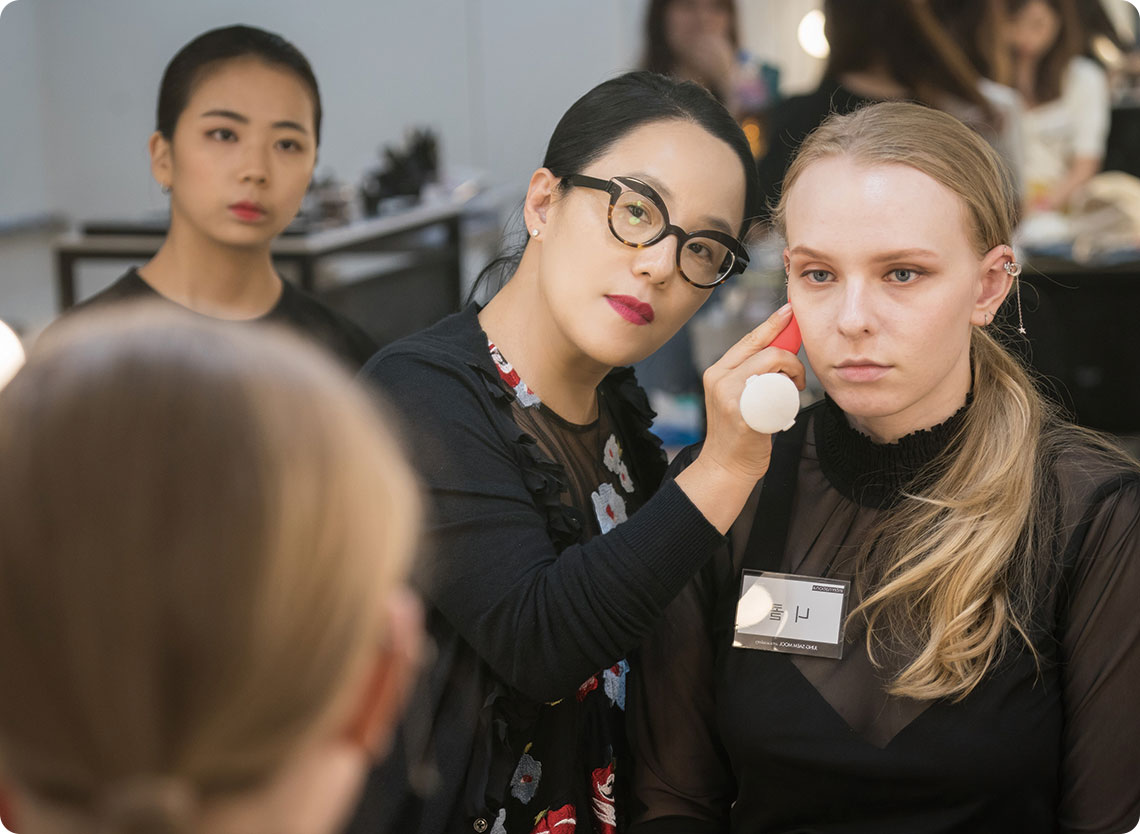
K-beauty Tastemaker
Under Jung’s theory of makeup, the individual’s distinctive features are broken down into line, color and texture, and makeup underscores the individual’s natural beauty by suitably highlighting those features. The various ways to highlight line, color and texture make up the seven principles of makeup. Skin is analyzed in terms of seven properties (such as thickness, moisture and tone), with makeup designed to compensate for weaknesses and set off strengths. Jung analyzed her original aesthetic sensibility through the lens of fine art, which enabled her to devise a logical and distinct theory of makeup. The excellence of that theory may be what has appealed to so many students, both from Korea and other countries. Thanks to those students, Jung’s theory has spread around the world, helping to lay the foundation for K-beauty.
Jung’s business acumen goes beyond makeup theory and methodology, however. After returning from her studies abroad, she took part in branding and product development for influential cosmetics brand Mule (which stands for “make your own rule”). Mule was the first cosmetics brand that incorporated fine art and involved artists in a professional capacity, leading to the release of never-before-seen products. For instance, one of the brand’s products was a cosmetics case that could hold several kinds of makeup, helping people apply their makeup more quickly. At the time, this was a novel product that piqued customers’ curiosity. In that way, Jung’s ideas, impressions and knowledge have paved the way for creative products and helped make K-beauty so distinctive today.
Following Mule’s success, Jung launched the brand Jungsaemmool Beauty, which she named after herself, and opened a flagship store called Plops. It was around that time that culture complexes―facilities hosting a range of cultural activities―were coming into vogue in Korea. Focusing on the commonalities between fine art and makeup, Jung held showcased Korean artists at Plops and released products in collaboration with them. In K-beauty today, the flagship store has emerged as a key method of showcasing brand identity, and Plops played a major role in launching that trend.
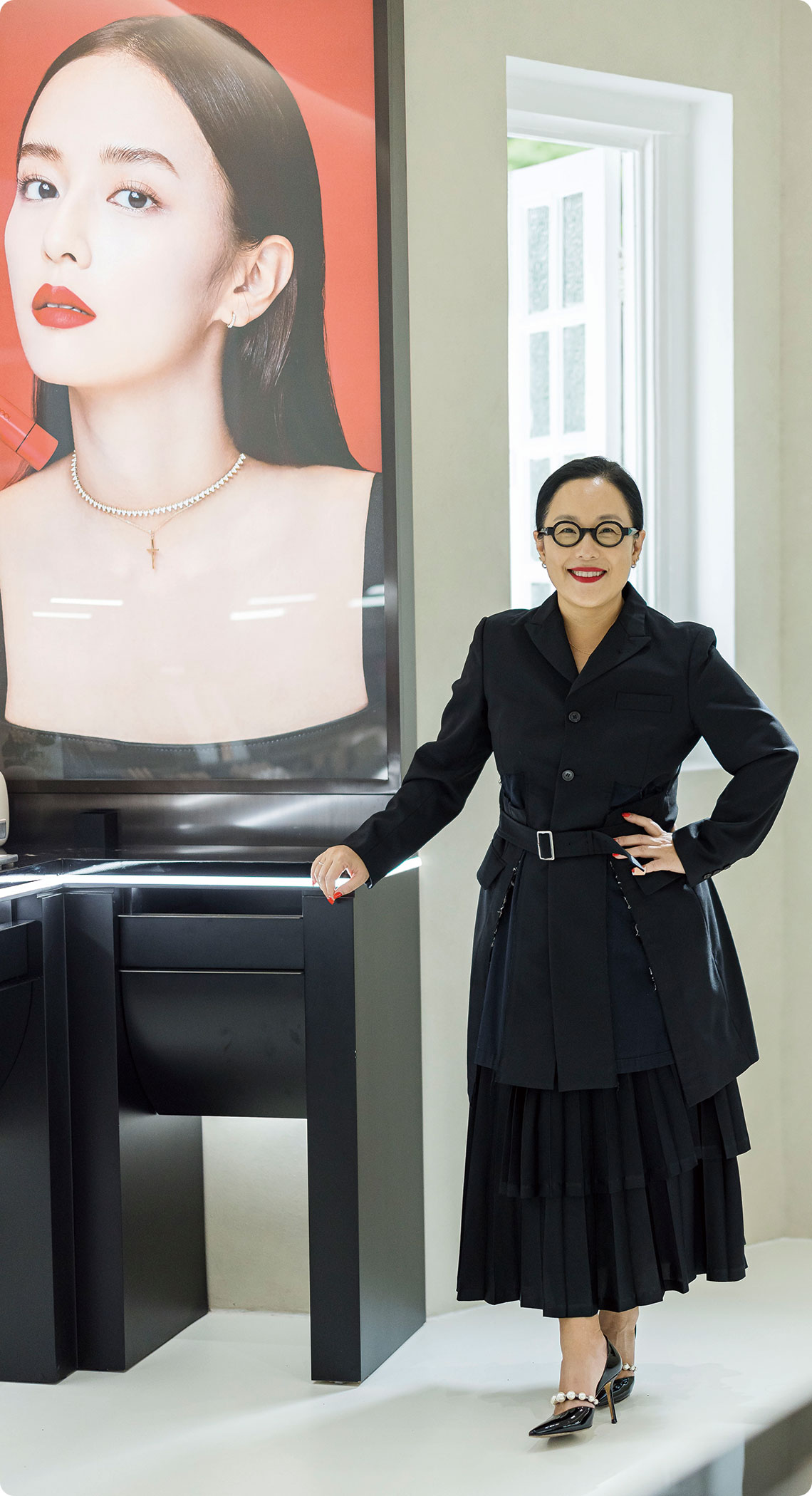
Unshakeable Philosophy
Ten years have passed since Jung laid the groundwork for K-beauty. By now, she has perfected her style, taught countless students, and launched brands named after herself. She is at once an artist, educator and businesswoman. While attitudes and mindsets tend to change with the role, Jung holds to a single philosophy: good makeup brings out the individual’s natural beauty.
“You often see makeovers that emphasize the product or the artist’s technique over the person under that makeup. That’s not necessarily wrong, and as a businesswoman myself, I understand that approach. But for me, people are still more important than the product. I think that the product and technique ought to bring out the best in people,” Jung said.
What does it take to deliver makeup of that quality? Jung says it all comes down to attitude: you have to be willing to serve others. But why does attitude matter when you’re touching up someone’s appearance? “People aren’t a painter’s canvas―you can’t throw them in the trash if you make a mistake. The artist has to identify and rectify their own weaknesses before meeting a client. If you’re distracted by something unrelated to your technique, such as your emotions or some situation, your distraction can have an impact on the makeup. That’s why I always seek mental peace through meditation and prayer. Whatever the situation, I make sure I’m mentally ready for the client before we meet,” she said.
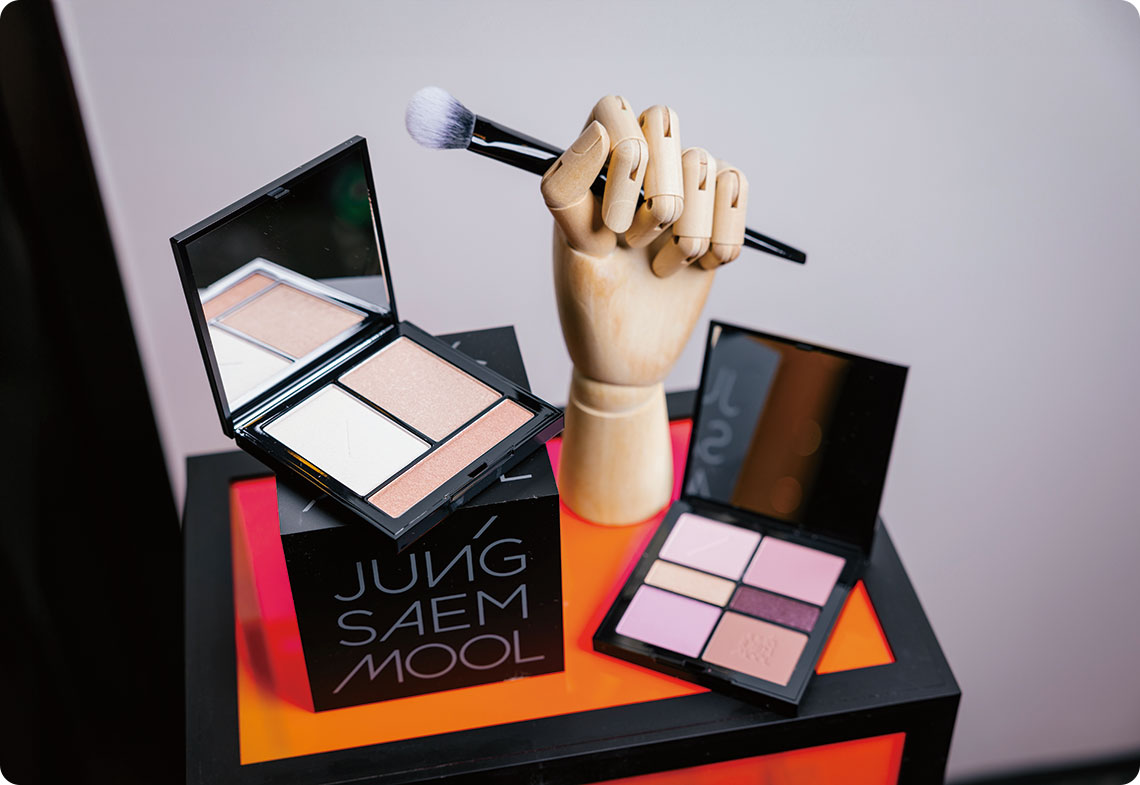
Beauty Starts with Her
There’s a simple reason Jung remains so committed to her philosophy today, 33 years after first entering the field. In short, makeup is her calling. Makeup has made every moment of her life meaningful, kindling her dreams and making them grow. By the same token, makeup has enabled her to share those dreams with others. Nowadays, she can barely imagine life without makeup. With makeup making up such an outsize share of her life, she’s not about to call it quits now. She’s determined to keep meeting people, exploring and learning things so that even more people can find their own beauty.
“When I was young and foolish, I prayed to God that if he wasn’t going to let me learn, he should at least give me a talent. That prayer seems to have been answered in my life. Obviously, not everybody gets a moment like that. That just makes me want to help others even more. I plan to share my knowledge and knowhow in a wide range of media. Many people out there have been frustrated in their desire to learn and in their search for a beauty of their own, and I’d like to help them find the answer,” Jung said.
Jung’s slogan is “Beauty Starts from You. Just Believe.” That slogan could be taken from her own life. Jung’s belief in herself is behind the numerous achievements that have made the field of K-beauty and Jung herself what they are today. So what’s next for this makeup maven? She’s gearing up for artist Jung Eun-hye’s solo exhibition at Plops at the end of the year while traveling around the world to meet students and clients. As she spoke about the next chapter in her life, her eyes sparkled with such confidence and beauty.

